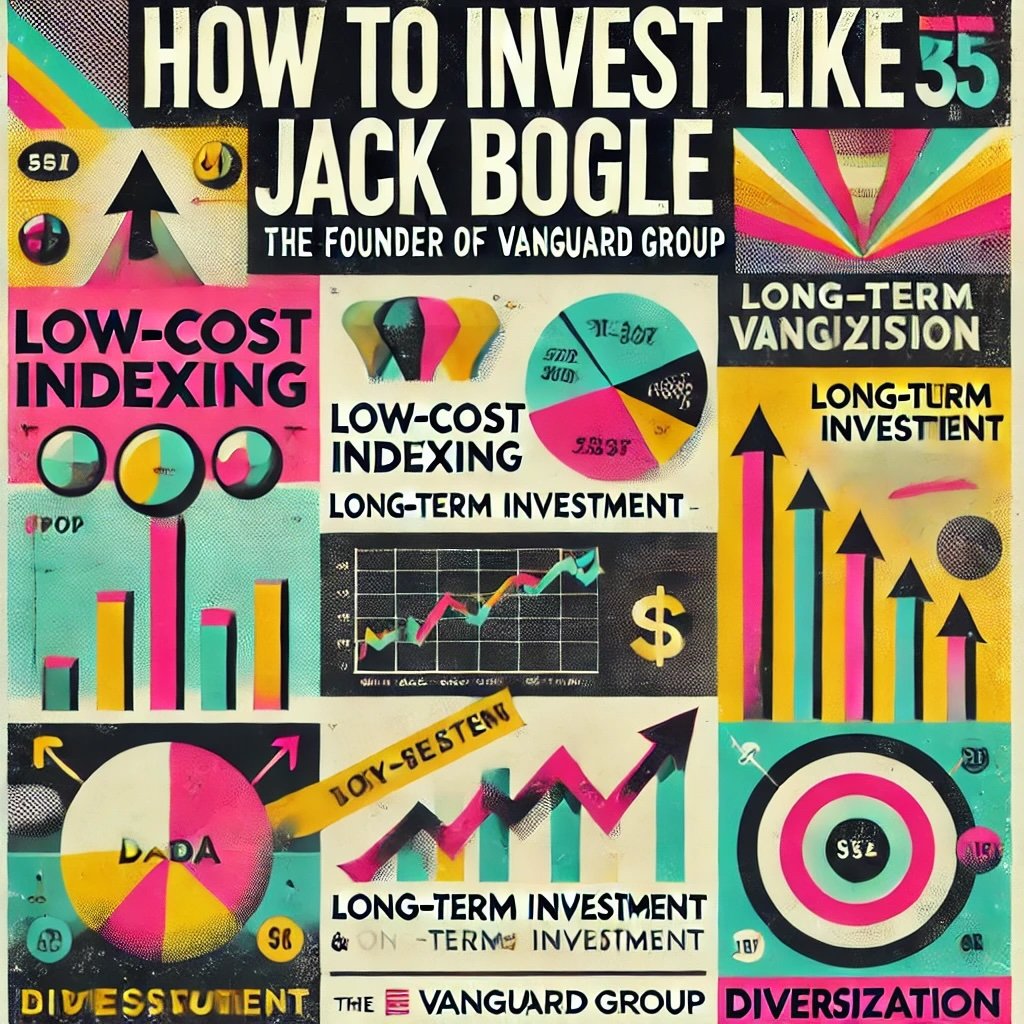“Rule No.1: Never lose money. Rule No.2: Never forget Rule No.1.” This famous dictum is credited to the Oracle of Omaha himself, Warren Buffett, and captures his key investing philosophy with characteristic wit and simplicity. On the surface, this might appear as a simple catchphrase, but a deeper dive into this adage reveals the core of Buffett’s investing mindset and the guiding principle that has fueled his unprecedented success in the world of finance.

Importance of this principle in Buffett’s investing philosophy
Buffett’s approach to investing has always been governed by a risk-averse, value-oriented philosophy. This approach places capital preservation over and above capital appreciation. The principle of never losing money underscores the primary importance of risk management in Buffett’s strategy. It speaks to the idea that successful investing is not just about making profitable investments, but also about avoiding losses wherever possible.

Evaluate the viability of this rule in various investing scenarios
While Buffett’s ‘never lose money’ rule has undeniable merit, it raises several questions. Is it always practical or even possible to avoid losses in investing? Does it apply to all investors, regardless of their risk tolerance, investment goals, or financial expertise? In this article, we will critically examine the viability of Buffett’s cardinal rule across different investing scenarios, illuminate its nuances, and demystify its broader implications for the everyday investor. Our goal is not to challenge the wisdom of one of the greatest investors of all time, but rather to understand its application in the complex, ever-changing world of investing.

Understanding ‘Never Lose Money’ in Context
At face value, Warren Buffett’s “Never Lose Money” rule may sound an impossible goal to achieve.

What ‘Never Lose Money’ means in Buffett’s investing philosophy
After all, investing is inherently risky, and losses are a part of the game. However, in the context of Buffett’s investing philosophy, “Never Lose Money” is more about the mindset of prioritizing risk management and capital preservation over seeking spectacular gains.
It’s crucial to note that Buffett does not intend this rule to suggest that one should never make an investment that results in a loss. Instead, the principle advises investors to enter into investments with a mindset focused on minimizing potential losses. This could mean passing on investments that carry a high risk or investing in companies with solid financial footing and proven business models that can weather market downturns.
Connection to the concept of ‘Margin of Safety’
Buffett’s “Never Lose Money” rule is intrinsically tied to the principle of ‘Margin of Safety’—a concept he borrowed from his mentor, Benjamin Graham. The margin of safety is the difference between a company’s intrinsic value (its real, calculable worth) and its market price. Buying with a margin of safety ensures you pay less than what the company is worth, thereby providing a cushion that can help protect against losses if things go south. This idea embodies Buffett’s cautious approach, aiming to minimize downside risk while leaving room for upside potential.
Importance of risk management in investing
The essence of Buffett’s rule and the concept of margin of safety is the fundamental importance of risk management in investing. Buffett understands that to win in the investing game, one does not always have to hit home runs; instead, it’s about not losing your capital. In other words, the primary goal should be to avoid a permanent loss of capital.
The process of risk management involves careful analysis, understanding the business you’re investing in, recognizing market trends, and being patient for the right opportunity. It’s about being cautious when others are euphoric and seizing the opportunity when others are fearful. This mindset, in essence, is at the core of the “Never Lose Money” rule.
Real World Applications of the Rule
There are numerous examples in Buffett’s illustrious investing career that illustrate the successful application of the ‘Never Lose Money’ rule.
Examples of Buffett’s investments where he applied this rule successfully

Consider his purchase of Coca-Cola shares in the late 1980s. After extensive analysis, Buffett concluded that the intrinsic value of the company, considering its brand strength, global reach, and consistent profits, far exceeded its market price at the time. His investment in Coca-Cola has yielded substantial returns over the years, demonstrating the wisdom of the ‘Never Lose Money’ rule.
Another classic example is Buffett’s investment in the insurance industry, most notably in GEICO. His understanding of the insurance business, coupled with the persistent profitability and competitive advantage of companies like GEICO, allowed him to invest confidently, minimizing the risk of loss.
Instances when Buffett refrained from investment opportunities due to potential risk
Buffett’s investing history is also marked by the absence of certain types of investments due to potential risk. Notably, during the Dot-com bubble in the late 1990s, Buffett refrained from investing in internet stocks. Despite the hype and potential for high returns, he stuck to his principles, acknowledging that he did not fully understand the business models and thus could not assess the intrinsic value of these companies. Buffett’s decision to avoid such investments despite public frenzy proved wise when the bubble burst and many of these companies went bust, leading to massive losses for investors.

Understanding the importance of time horizon in Buffett’s rule
The time horizon is a critical factor in the application of the ‘Never Lose Money’ rule. Buffett is a long-term investor, often holding onto his investments for decades. This strategy allows the companies he invests in ample time to grow and produce substantial returns, which can help cover any interim losses.
For example, during the financial crisis of 2008, the market value of many of Buffett’s holdings plummeted. However, Buffett held on to his investments, having faith in their intrinsic value and long-term potential. As the market recovered, so did the value of his investments. This illustrates the importance of patience and a long-term perspective in adhering to the ‘Never Lose Money’ rule.

Criticisms of the ‘Never Lose Money’ Rule
While Buffett’s ‘Never Lose Money’ rule is undoubtedly wise, its application can be challenging, particularly in volatile markets.
The challenge of applying this rule in volatile markets
During times of market turbulence, even the most fundamentally solid companies can see their stock prices fall dramatically. For investors who need to liquidate their investments during such times, adhering to the ‘Never Lose Money’ rule can be difficult. This criticism highlights the need for a long-term perspective when applying this rule.
The role of diversification in mitigating risk
Diversification is a widely acknowledged strategy for risk mitigation, spreading investments across a variety of assets to reduce the potential for loss. However, Buffett’s approach often involves concentrated investments in a few select businesses he understands deeply. Critics argue that this approach may contradict the ‘Never Lose Money’ rule, as it exposes the portfolio to increased risk in case of a downturn in one or a few investments. However, it’s important to note that Buffett mitigates this risk by investing in companies with durable competitive advantages, thereby minimizing the likelihood of significant loss.

The limitations of the rule for small investors or those with short term investment goals
Buffett’s ‘Never Lose Money’ rule also has limitations when applied to small investors or those with short-term investment goals. Small investors might not have the resources or access to extensive research required to determine a company’s intrinsic value accurately. Moreover, investors with short-term goals may need to exit investments during market downturns, resulting in potential losses. Thus, while the ‘Never Lose Money’ rule is an admirable principle, its applicability may vary based on the investor’s resources, goals, and investment horizon.
source: GrahamValue on YouTube
Viability of ‘Never Lose Money’ Rule for Different Types of Investors
For long-term, patient investors, the ‘Never Lose Money’ rule is undoubtedly applicable and can serve as a guiding principle.

Applicability for long-term, patient investors
This is because long-term investing allows the investor to weather short-term market volatility and wait for their investments to appreciate over time. Such investors can also afford to be selective, waiting for the right investment opportunity that aligns with Buffett’s rule. Long-term investors can employ the principle of ‘Margin of Safety’ more effectively as they don’t require immediate returns, thus adhering to the ‘Never Lose Money’ principle more closely.
Viability for short-term or risk-averse investors
On the other hand, for short-term investors or those highly averse to risk, the ‘Never Lose Money’ rule might be challenging to implement. Short-term investors often face the pressure to make quick profits, which might lead them to take on investments with higher risks. Similarly, risk-averse investors might avoid equity investments altogether due to fear of loss. However, these investors might benefit from Buffett’s principle by adopting a cautious approach and focusing on solid, low-risk investments, even if the returns are modest.
Considerations for beginner investors
For beginner investors, the ‘Never Lose Money’ rule serves as valuable advice but requires careful interpretation. Beginners should focus on gaining a sound understanding of investment fundamentals, diversifying their portfolio, and being cautious with their investment decisions. While beginner investors may not have the depth of knowledge to analyze companies’ intrinsic value in Buffett’s style, they can use this rule as a reminder to avoid reckless investing and focus on capital preservation. The core essence of Buffett’s rule – prioritizing risk management and maintaining a long-term perspective, can be immensely beneficial for investors at any stage of their investing journey.
source: FREENVESTING on YouTube
The Role of Research and Understanding in ‘Never Losing Money’
One of the cornerstones of Buffett’s success in upholding the ‘Never Lose Money’ rule is his relentless focus on thorough research and deep understanding of the businesses he invests in.

Buffett’s thorough research process and deep understanding of businesses
Buffett’s strategy involves reading copious amounts of financial reports, understanding industry trends, and evaluating the competitive landscape to accurately gauge a company’s intrinsic value and future prospects. By having a deep understanding of the business, he is better equipped to assess the risks associated with the investment, thereby minimizing potential losses.
The impact of sector knowledge and financial literacy in minimizing loss
Sector knowledge and financial literacy play a significant role in applying the ‘Never Lose Money’ rule. An investor with a deep understanding of a particular sector can identify the industry’s key growth drivers, assess potential risks, and make more informed investment decisions. This expertise can help identify undervalued investment opportunities, maximizing the chance of gain and minimizing the risk of loss.
Similarly, financial literacy allows investors to understand financial reports, evaluate a company’s financial health, and understand the implications of financial ratios and other key metrics. An investor with robust financial literacy is better equipped to apply the ‘Margin of Safety’ principle effectively, ensuring a lower risk of investment loss.

The correlation between investment understanding and risk
Buffett has often reiterated, “Risk comes from not knowing what you’re doing.” There is a clear correlation between understanding an investment and the level of risk associated with it. Investments in companies or sectors that an investor understands well are likely to carry lower risk compared to investments in unfamiliar territories. This understanding allows the investor to identify potential red flags, assess the sustainability of the business model, and understand the company’s competitive position, enabling them to avoid potentially risky investments. Thus, deep understanding is a key element in the successful application of the ‘Never Lose Money’ rule.
source: Investor Center on YouTube

‘Never Lose Money’ vs. ‘Always Make Money’
The adages ‘Never Lose Money’ and ‘Always Make Money’ may sound similar, but there’s a fundamental distinction between them.
The difference between preserving capital and always generating profit
‘Never Lose Money’ underscores the importance of capital preservation. This involves careful risk assessment, avoiding overpriced assets, and investing in businesses that have solid financials and a sustainable competitive advantage. The goal is to ensure that the investment’s value does not erode over time, even if it does not necessarily yield high returns.
On the other hand, ‘Always Make Money’ emphasizes profit generation. This could potentially involve taking on higher-risk investments for the chance of higher returns. While this approach may lead to significant gains in some instances, it could also result in substantial losses if the investment doesn’t pan out as expected.

Understanding the inevitability of occasional losses in investing
Regardless of the investment strategy, occasional losses are almost inevitable in investing. Even Buffett, with his ‘Never Lose Money’ mantra, has experienced losses in his investment career. The critical point is that these losses are often temporary and do not signify a permanent loss of capital. As long as the investor has made a sound, well-researched investment decision, the investment’s value is likely to recover and grow over time, reinforcing the distinction between temporary price declines and permanent losses.
Evaluating the importance of managing losses over maximizing gains
While the prospect of maximizing gains can be enticing, managing losses is equally, if not more, important in the realm of investing. A substantial loss can significantly set back an investment portfolio, requiring even greater returns to recover the lost ground. As such, the ‘Never Lose Money’ rule’s focus on avoiding losses and preserving capital can be a more effective strategy for sustainable wealth accumulation. This approach requires diligent research, understanding of the business, patience, and a long-term investment horizon, echoing the time-tested principles of Warren Buffett’s investing philosophy.
12-Question FAQ: Warren Buffett’s Rule “Never Lose Money” — Viability, Limits, and How to Use It
What does “Never lose money” actually mean in Buffett’s framework?
It isn’t a literal promise of zero losses. It’s a decision rule: prioritize permanent capital preservation over chasing returns. In practice, that means buying below intrinsic value, insisting on durable moats and aligned incentives, and avoiding situations where downside is hard to quantify.
How does the rule connect to margin of safety?
They’re inseparable. Margin of safety is the mechanism for Rule #1: purchase with a conservative discount to fair value so inevitable errors, bad luck, or macro shocks are absorbed without permanent impairment.
Is the rule realistic across all market conditions?
Drawdowns are inevitable; permanent losses are not. The rule is most viable when you own understandable, cash-generative businesses bought at sensible prices with modest leverage—and you have the time horizon and temperament to sit through volatility.
What’s the difference between volatility and risk here?
Buffett treats volatility as price noise and risk as a lasting hit to intrinsic value (fraud, secular decline, bad capital allocation, lethal leverage). The rule targets the latter; it tolerates the former when value is intact.
How do position sizing and diversification support Rule #1?
Size biggest where you have the highest conviction and fattest margins of safety; keep losers small and cut exposures that rely on perfection. Diversify across business models and cash-flow drivers (not just tickers) to avoid single-point failure.
When should an investor pass because of Rule #1?
If you can’t explain unit economics, moat durability, key risks with leading indicators, and a conservative valuation range, you lack the information edge to protect capital. Pass and keep the optionality of cash.
Does the rule apply to short-term or income-focused investors?
It can—through safer wrappers (broad, low-cost funds), cash buffers, and avoiding forced selling. But strict Rule #1 gets harder when liquidity deadlines (near-term withdrawals) can turn temporary drawdowns into realized losses.
How do you operationalize Rule #1 before buying?
Use a pre-commit memo: why it’s in your circle, 3 value drivers, base/bull/bear with probabilities, breaking points (kill-criteria), and a “why we could be wrong” section. Only buy if downside is survivable and upside doesn’t require heroics.
How do you uphold Rule #1 after buying?
Monitor drivers, not headlines: moat signals, unit economics, incentive changes, leverage/covenants, reinvestment runway. If the thesis breaks (not just price), trim or exit—protecting capital outranks anchoring to entry price.
Does Rule #1 conflict with concentrated portfolios?
Concentration magnifies both skill and error. It’s compatible only if each position clears high bars: simplicity, durability, superior management, valuation cushion. If those bars aren’t met, diversify more.
What are common violations of Rule #1?
Reaching for yield, trusting pro-forma stories over cash, confusing cyclical recovery with moat strength, overpaying for quality, underestimating leverage or customer concentration, and refusing to sell when the thesis is broken.
What’s the practical takeaway for everyday investors?
Adopt Rule #1 via process: broad, low-cost diversification unless you have true edge; hold a cash buffer to avoid forced selling; buy when margins of safety exist; write and follow exit rules tied to business drivers, not price charts.

Conclusion: Viability of Buffett’s ‘Never Lose Money’ Rule
Throughout this exploration, we’ve delved into the essence and viability of Warren Buffett’s ‘Never Lose Money’ rule. This principle is a testament to Buffett’s focus on capital preservation, thorough research, deep understanding of businesses, and long-term investing philosophy. We have also examined the rule’s applicability and challenges in different investing scenarios, shedding light on its strengths and potential limitations.
Understanding and applying the rule in context
It’s crucial to understand and apply the ‘Never Lose Money’ rule in context. It doesn’t necessarily mean an investor will never experience a decrease in an investment’s value or occasional losses. Rather, it emphasizes investing in fundamentally solid companies at a reasonable price, aiming for capital preservation and long-term value appreciation. It underscores the importance of reducing risk through thorough research, understanding of the business, and maintaining a long-term perspective.

Final thoughts on the use of this rule in different investing scenarios
In conclusion, while the ‘Never Lose Money’ rule may not be universally applicable in every investing scenario, it serves as a guiding principle for investors. For long-term, patient investors, it is undoubtedly a valuable mantra. For others, it provides a valuable lesson in prioritizing risk management, understanding investments, and maintaining a long-term perspective.
Regardless of the type of investor, the essence of this rule – the focus on capital preservation and making informed, considered investment decisions – can go a long way towards creating a successful investment strategy. As always, in the world of investing, knowledge, patience, and discipline remain the keys to success.
Important Information
Comprehensive Investment Disclaimer:
All content provided on this website (including but not limited to portfolio ideas, fund analyses, investment strategies, commentary on market conditions, and discussions regarding leverage) is strictly for educational, informational, and illustrative purposes only. The information does not constitute financial, investment, tax, accounting, or legal advice. Opinions, strategies, and ideas presented herein represent personal perspectives, are based on independent research and publicly available information, and do not necessarily reflect the views or official positions of any third-party organizations, institutions, or affiliates.
Investing in financial markets inherently carries substantial risks, including but not limited to market volatility, economic uncertainties, geopolitical developments, and liquidity risks. You must be fully aware that there is always the potential for partial or total loss of your principal investment. Additionally, the use of leverage or leveraged financial products significantly increases risk exposure by amplifying both potential gains and potential losses, and thus is not appropriate or advisable for all investors. Using leverage may result in losing more than your initial invested capital, incurring margin calls, experiencing substantial interest costs, or suffering severe financial distress.
Past performance indicators, including historical data, backtesting results, and hypothetical scenarios, should never be viewed as guarantees or reliable predictions of future performance. Any examples provided are purely hypothetical and intended only for illustration purposes. Performance benchmarks, such as market indexes mentioned on this site, are theoretical and are not directly investable. While diligent efforts are made to provide accurate and current information, “Picture Perfect Portfolios” does not warrant, represent, or guarantee the accuracy, completeness, or timeliness of any information provided. Errors, inaccuracies, or outdated information may exist.
Users of this website are strongly encouraged to independently verify all information, conduct comprehensive research and due diligence, and engage with qualified financial, investment, tax, or legal professionals before making any investment or financial decisions. The responsibility for making informed investment decisions rests entirely with the individual. “Picture Perfect Portfolios” explicitly disclaims all liability for any direct, indirect, incidental, special, consequential, or other losses or damages incurred, financial or otherwise, arising out of reliance upon, or use of, any content or information presented on this website.
By accessing, reading, and utilizing the content on this website, you expressly acknowledge, understand, accept, and agree to abide by these terms and conditions. Please consult the full and detailed disclaimer available elsewhere on this website for further clarification and additional important disclosures. Read the complete disclaimer here.





